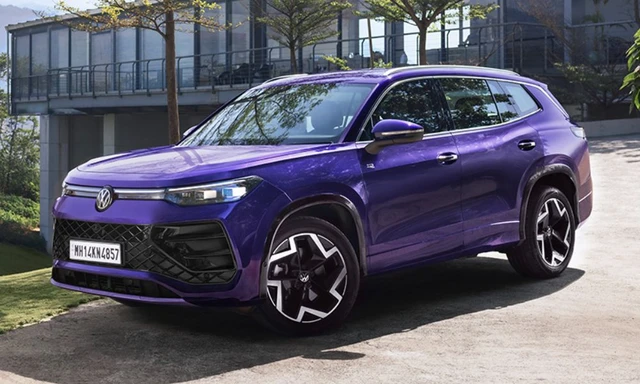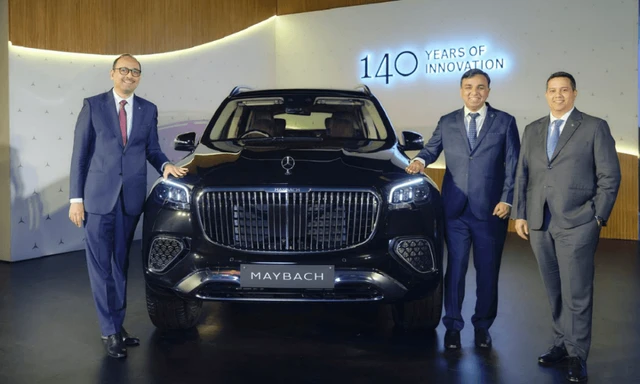Evolution of Wireless Charging for EVs

One of the major aspects of buying an electric car is to get the charging aspect sorted. The traditional way that is majorly used these days worldwide is visiting a charging station with the car. Then the car must be plugged into the charging station, and the rider must wait till the battery is fully charged. Alternatively, if the owner can get solar panels installed, the charging could be completed in the garage. The latest technology in the EV industry is the introduction of wireless charging.

What is wireless charging?
Wireless charging, also known as inductive charging, is a way of charging a device with the help of electromagnetic induction. The main purpose of this charging technique is to eliminate the need for cords and prevent damage.

What is wireless charging for EVs?
Wireless charging for EVs is considerably different from smartphone charging. Inductive charging allows the EVs to charge themselves automatically while the vehicle is parked.
Categories of Wireless Charging
Given the basic concept, there are two ways in which this can go down: -
- Static Wireless Charging: The car is parked in a wireless charging spot in this method. So, in the static position, the car gets charged.
- Dynamic Wireless Charging: This system suggests movement. The car charges itself automatically while traveling on the road.

Wireless Charging Systems
- CWCS (Capacitive Wireless Charging System): The electric field and the ensuing current are used to transfer power. The energy is transmitted between electrodes by electric fields. The combination of transmitter and receiver electrodes makes a capacitor. The space between acts as the dielectric. The frequency range is between 100 to 600 kHz.
- PMWC (Permanent Magnet-Gear Wireless Charging System): The transmitter and receiver are both made of armature winding. The armature winding itself contains synchronized permanent magnets. The electromagnetic field generated produces a torque that rotates the permanent magnets. The coupling of rotating permanent magnets is called magnetic gear.
- IWC (Inductive Wireless Charging System): Basic principles of induction are used for this process. There are two wound-up cables (coils) in play here. Electric current is sent through one coil that creates a magnetic field. That induces an electric current in the second coil!
- RIWC (Resonant Inductive Wireless Charging System): This process requires an oscillating magnetic field operating at high frequency. The logic here is that when two objects have the same resonant frequency and are placed close to each other, energy can be transferred from one object to another.
Latest News
 Jaiveer Mehra | Jan 15, 2026India-Spec Volkswagen Tayron RevealedThree-row SUV will be offered in the R-Line trim with features like 19-inch wheels, a 15-inch touchscreen, front seats with ventilation & massage function and more.1 min read
Jaiveer Mehra | Jan 15, 2026India-Spec Volkswagen Tayron RevealedThree-row SUV will be offered in the R-Line trim with features like 19-inch wheels, a 15-inch touchscreen, front seats with ventilation & massage function and more.1 min read car&bike Team | Jan 15, 2026Mercedes-Benz EQS SUV Gets A Celebration Edition For 2026, Prices start at Rs. 1.34 CroreThe new celebration edition will be available with both the EQS 450 and the EQS 580 versions of the SUV.1 min read
car&bike Team | Jan 15, 2026Mercedes-Benz EQS SUV Gets A Celebration Edition For 2026, Prices start at Rs. 1.34 CroreThe new celebration edition will be available with both the EQS 450 and the EQS 580 versions of the SUV.1 min read Jaiveer Mehra | Jan 15, 2026Auto Sales: Mercedes-Benz Sales Decline 3 Per Cent; 19,007 Units Sold In CY2025The German carmaker reported year-on-year growth in sales for its Top-End Vehicles (TEVs), EV range, and AMG models, although sales in entry-level segments were down 20 per cent.3 mins read
Jaiveer Mehra | Jan 15, 2026Auto Sales: Mercedes-Benz Sales Decline 3 Per Cent; 19,007 Units Sold In CY2025The German carmaker reported year-on-year growth in sales for its Top-End Vehicles (TEVs), EV range, and AMG models, although sales in entry-level segments were down 20 per cent.3 mins read Jaiveer Mehra | Jan 14, 2026Bajaj Chetak C25 Launched In India; Prices Start From Rs 91,399The new series is the most affordable under the Chetak family and gets a hub-mounted electric motor - a first for the Chetak family.2 mins read
Jaiveer Mehra | Jan 14, 2026Bajaj Chetak C25 Launched In India; Prices Start From Rs 91,399The new series is the most affordable under the Chetak family and gets a hub-mounted electric motor - a first for the Chetak family.2 mins read car&bike Team | Jan 14, 2026India-Made Mercedes-Maybach GLS Launched At Rs 2.75 CroreThe locally assembled Maybach GLS is Rs 42 lakh cheaper than the imported model.1 min read
car&bike Team | Jan 14, 2026India-Made Mercedes-Maybach GLS Launched At Rs 2.75 CroreThe locally assembled Maybach GLS is Rs 42 lakh cheaper than the imported model.1 min read Jaiveer Mehra | Jan 13, 2026Tata Punch Facelift Launched At Rs 5.59 Lakh; Gets Turbo-Petrol Engine OptionUpdated micro SUV gets revised styling, new features and a new turbo-petrol powertrain option.2 mins read
Jaiveer Mehra | Jan 13, 2026Tata Punch Facelift Launched At Rs 5.59 Lakh; Gets Turbo-Petrol Engine OptionUpdated micro SUV gets revised styling, new features and a new turbo-petrol powertrain option.2 mins read
 Bilal Firfiray | Jan 9, 2026Toyota Urban Cruiser Hyryder: 10,000 km Long-Term ReviewAfter spending over three months and 10,000 km with the Toyota Urban Cruiser Hyryder Hybrid, we were impressed by its real-world mileage, seamless hybrid, practical comfort, and Toyota reliability. Is it the best C-SUV then?5 mins read
Bilal Firfiray | Jan 9, 2026Toyota Urban Cruiser Hyryder: 10,000 km Long-Term ReviewAfter spending over three months and 10,000 km with the Toyota Urban Cruiser Hyryder Hybrid, we were impressed by its real-world mileage, seamless hybrid, practical comfort, and Toyota reliability. Is it the best C-SUV then?5 mins read Seshan Vijayraghvan | Jan 8, 20262026 Mahindra XUV 7XO Review: Big On Tech, Bigger On ComfortThe new Mahindra XUV 7XO is flashier, feature packed, and comes with more advanced tech. But are the changes just incremental or actually substantial?1 min read
Seshan Vijayraghvan | Jan 8, 20262026 Mahindra XUV 7XO Review: Big On Tech, Bigger On ComfortThe new Mahindra XUV 7XO is flashier, feature packed, and comes with more advanced tech. But are the changes just incremental or actually substantial?1 min read Preetam Bora | Jan 10, 2026Simple One Gen 2 First Ride Review: 265 km Claimed Range!The Gen 2 model of Simple Energy’s first electric scooter gets a fair few updates, including new features, tech, more range and lighter weight. We spent a couple of hours with the Simple One Gen 2 to find out if it manages to impress.6 mins read
Preetam Bora | Jan 10, 2026Simple One Gen 2 First Ride Review: 265 km Claimed Range!The Gen 2 model of Simple Energy’s first electric scooter gets a fair few updates, including new features, tech, more range and lighter weight. We spent a couple of hours with the Simple One Gen 2 to find out if it manages to impress.6 mins read Amaan Ahmed | Jan 3, 2026VLF Mobster 135 300 KM Review: Fun But FlawedA 125 cc scooter with Italian design and Chinese genes is a rare combination, and while some may be tempted to dismiss it because of its origins, the VLF Mobster shows 125s can also be exciting – but not without compromises.11 mins read
Amaan Ahmed | Jan 3, 2026VLF Mobster 135 300 KM Review: Fun But FlawedA 125 cc scooter with Italian design and Chinese genes is a rare combination, and while some may be tempted to dismiss it because of its origins, the VLF Mobster shows 125s can also be exciting – but not without compromises.11 mins read Preetam Bora | Dec 30, 2025TVS Orbiter Review: Real-World Performance and Range TestedThe TVS Orbiter is a promising electric scooter promising decent range, practicality and pricing. But is there any reason to avoid it? We spent a few days getting to know it better.9 mins read
Preetam Bora | Dec 30, 2025TVS Orbiter Review: Real-World Performance and Range TestedThe TVS Orbiter is a promising electric scooter promising decent range, practicality and pricing. But is there any reason to avoid it? We spent a few days getting to know it better.9 mins read




















































































































